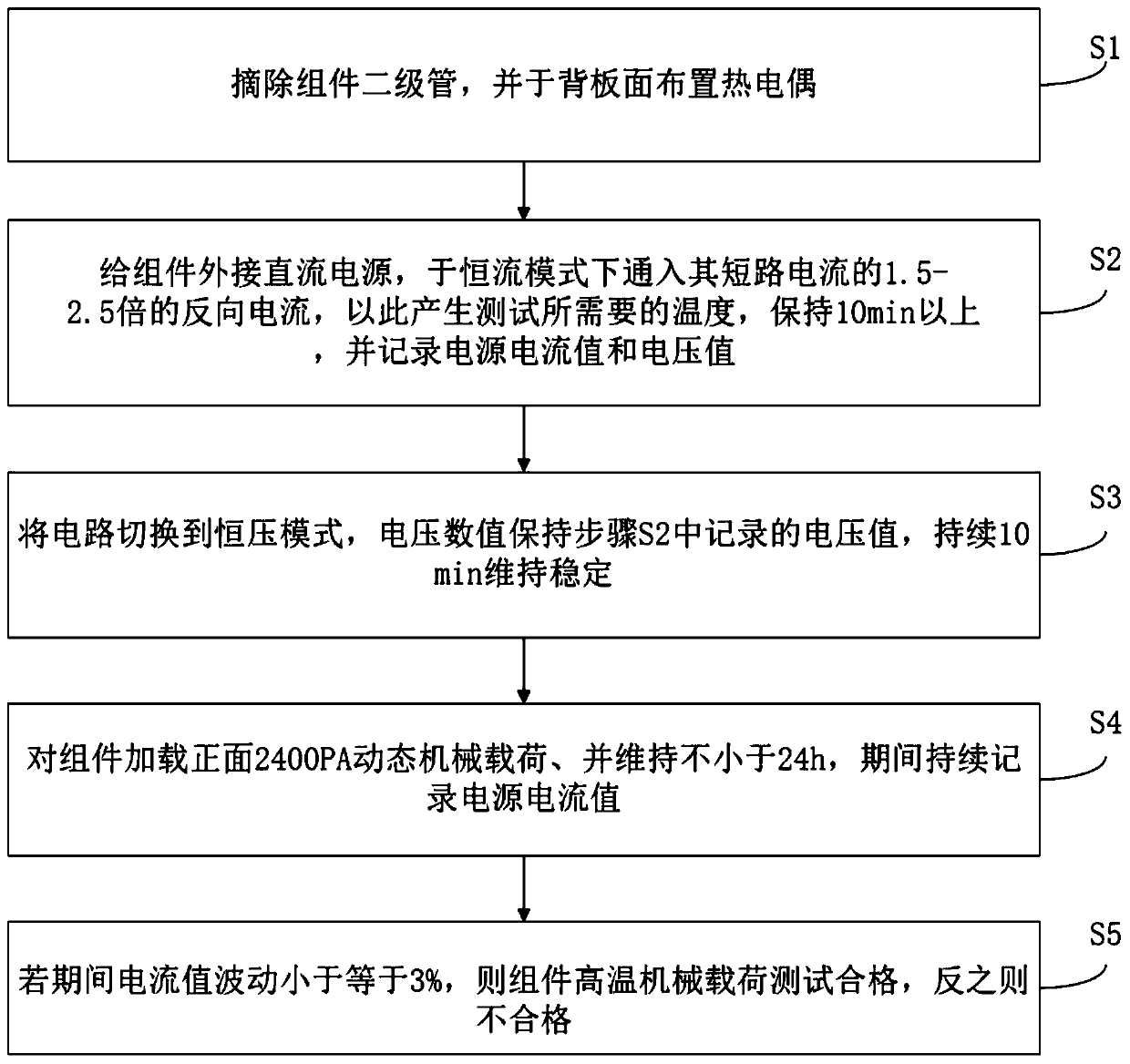Photovoltaic module reliability detection method
A detection method and technology of photovoltaic modules, which are applied in the monitoring of photovoltaic systems, photovoltaic power generation, photovoltaic modules, etc., can solve the problems of long experimental period, reduced electrical conductivity and bonding performance, and reduced adhesion of conductive adhesives, and can achieve the test results. Short cycle, accurate reliability, cost reduction effect
- Summary
- Abstract
- Description
- Claims
- Application Information
AI Technical Summary
Problems solved by technology
Method used
Image
Examples
Embodiment 1
[0036] A method for detecting the reliability of a photovoltaic module, comprising the following steps:
[0037] S1. Remove the diode of the component to ensure that the bypass diode of the component will not be broken down and short-circuited when the component is powered on, and a thermocouple is arranged on the backplane to detect the temperature of the component;
[0038] S2. Connect an external DC power supply to the component, and pass in a reverse current of 1.5 times its short-circuit current in constant current mode, and connect the positive pole of the power supply to the positive pole of the component to realize the reverse current supply, and keep it for 10 minutes. When the current is high, it will generate heat to generate the high temperature required for the test. At the same time, the temperature of the component is detected and maintained at 130 degrees Celsius. The temperature of the component is controlled by adjusting the input current, and the current valu...
Embodiment 2
[0043] A method for detecting the reliability of a photovoltaic module, comprising the following steps:
[0044] S1. Remove the diode of the component to ensure that the bypass diode of the component will not be broken down and short-circuited when the component is powered on, and a thermocouple is arranged on the backplane to detect the temperature of the component;
[0045] S2. Connect an external DC power supply to the component, and pass in a reverse current 2.5 times its short-circuit current in constant current mode. Connect the positive pole of the power supply to the positive pole of the component to realize the reverse current supply, and keep it for 30 minutes. When the current is high, it will generate heat to generate the high temperature required for the test. At the same time, the temperature of the component is detected and maintained at 150 degrees Celsius. The temperature of the component is controlled by adjusting the input current, and the current value and v...
Embodiment 3
[0050] A method for detecting the reliability of a photovoltaic module, comprising the following steps:
[0051] S1. Remove the diode of the component to ensure that the bypass diode of the component will not be broken down and short-circuited when the component is powered on, and a thermocouple is arranged on the backplane to detect the temperature of the component;
[0052] S2. Connect an external DC power supply to the component, and pass in a reverse current of 2.0 times its short-circuit current in constant current mode, and connect the positive pole of the power supply to the positive pole of the component to realize the reverse current supply, and keep it for 40 minutes. When the current is high, it will generate heat to generate the high temperature required for the test. At the same time, the temperature of the component is detected and maintained at 145 degrees Celsius. The temperature of the component is controlled by adjusting the input current, and the current valu...
PUM
 Login to View More
Login to View More Abstract
Description
Claims
Application Information
 Login to View More
Login to View More - R&D
- Intellectual Property
- Life Sciences
- Materials
- Tech Scout
- Unparalleled Data Quality
- Higher Quality Content
- 60% Fewer Hallucinations
Browse by: Latest US Patents, China's latest patents, Technical Efficacy Thesaurus, Application Domain, Technology Topic, Popular Technical Reports.
© 2025 PatSnap. All rights reserved.Legal|Privacy policy|Modern Slavery Act Transparency Statement|Sitemap|About US| Contact US: help@patsnap.com

